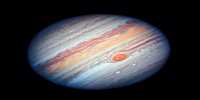A crewless rocket named Artemis I will go around the Moon for a month. With 30% female engineers, the program intends to boost the involvement of women in space exploration. Additionally, the Artemis I mission will transport two mannequins that will be used to research how radiation affects women’s bodies so that NASA can improve the protection of female astronauts.
Because their bodies tend to reach NASA’s maximum permissible threshold of radiation earlier than men’s, female astronauts are currently less likely to be chosen for missions than male astronauts. After 2024, NASA plans to send Artemis III with the first woman and person of color to the Moon.
The mission’s name strikes a chord with me as a student of Greek mythology because Artemis was a Roman and Greek goddess who was also a modern feminist icon. She was also associated with the moon.
In ancient Greece, Artemis was a revered deity who was worshiped as least as early as the first millennium B.C., if not earlier. She was the child of Zeus, the supreme Olympian god who presided over the universe from Mount Olympus. She was also the twin sister of Apollo, god of the Sun and oracles.
Goddess of the forest and hunting, Artemis was virginal. Her resilience and independence have long served as an example for women in a variety of endeavors. In a poem named “Artemis,” for instance, author Allison Eir Jenks emphasizes women’s independence and freedom by writing: “I’m no longer your god-mother… your chef, your bus-stop, your therapist, your junk-drawer.”
Artemis, the goddess of animals and the wilderness, has served as a model for environmental conservation projects because she is seen as a powerful woman who uses her position to protect the environment.
While the Greek Artemis was strong and brave, she wasn’t always compassionate and considerate, even toward women. A woman’s sudden death, particularly during giving birth, was blamed on her hastiness. With the passage of time, the goddess’s aspect has diminished. Artemis has gained prominence as a symbol of female strength and independence as feminism has grown.
The naming of NASA missions after mythological characters is nothing new. Numerous rockets and launch systems were given Greek sky deities’ names beginning in the 1950s, including Atlas and Saturn, whose Greek name is Cronos.
Saturn and Atlas were titans, not merely gods. The titans in Greek mythology stand for the untamed, primal powers of nature, which evokes the enormous expanse of space exploration. The Olympians, who in Greek mythology stand in for civilization, ultimately overcame the Titans, who were known for their great strength and might but also for being dangerously rebellious.
NASA started calling missions after the sky-related children of Zeus after the invention of manned space flight. The messenger deity who uses his winged sandals to fly between Olympus, Earth, and the underworld is Hermes in Roman mythology. He is the inspiration for the name of the Mercury program, which ran from 1958 to 1963.
The three-year-long Gemini program, which began in 1963, featured a spacecraft made for two astronauts and was named after Castor and Pollux, the twin sons of Zeus who were cast in the sky as the constellation of Gemini. Castor and Pollux are also known as the Dioscuri in Greek. Greek and Roman art frequently portrayed them with a star above their heads.
The names Columbia, Challenger, Discovery, Atlantis, and Endeavour were chosen for the space shuttle program because they were a departure from mythical names and were designed to suggest an innovative attitude. The space shuttle program ran from 1981 to 2011.
NASA is paying homage to the Apollo program, which ran from 1963 to 1972 and launched the first astronauts to the Moon in 1969, with Artemis. Artemis will continue where her twin brother left off more than 50 years from now, ushering in a more diversified era of human space exploration.















